Zoology Museum Learning Page
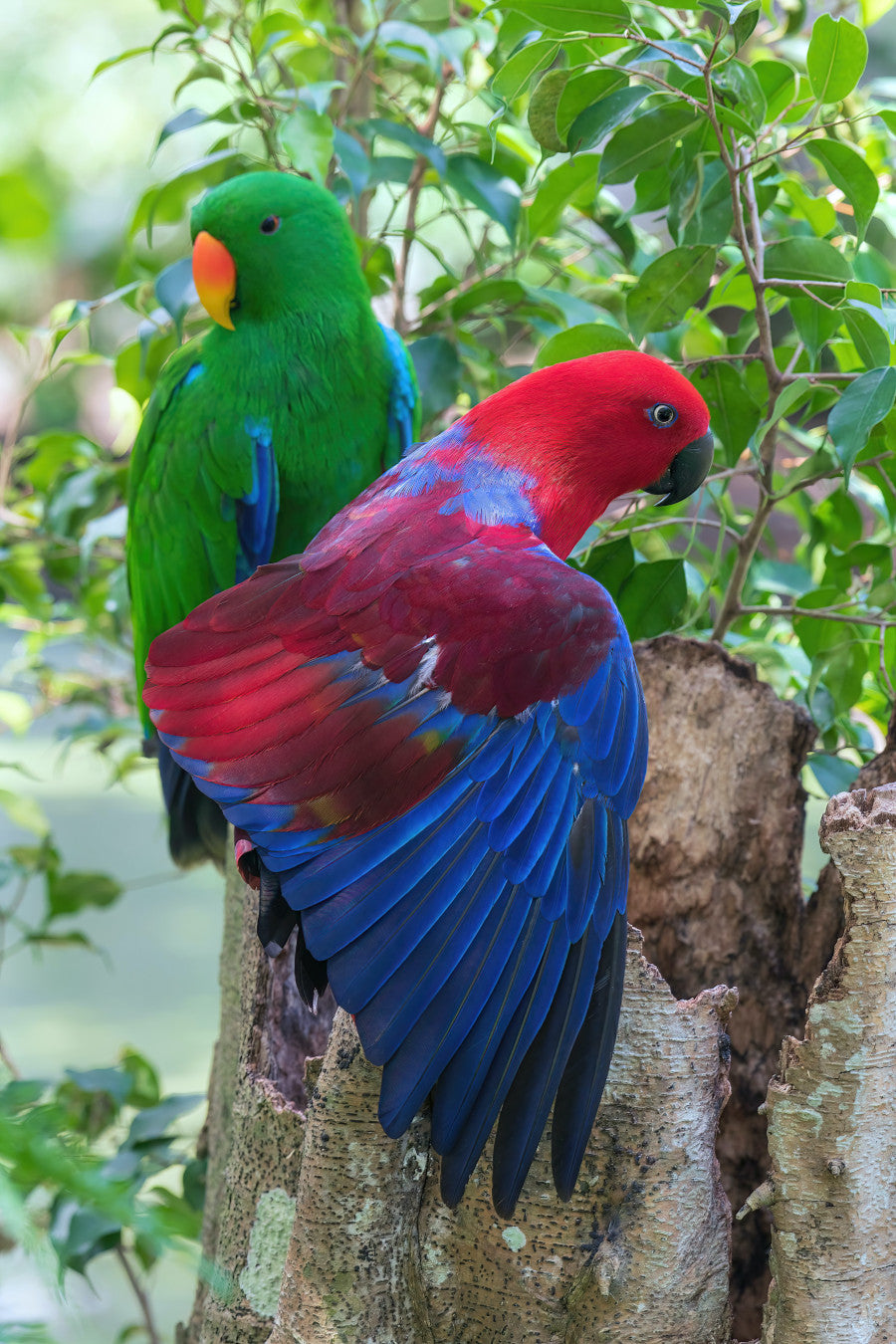
What are we? We are eclectus parrots.
Do we have feathers? Yes! The colours of our plumage (feathers) are very different for the male and female birds. The male is bright green and the female is bright red and purple. This difference is called sexual dimorphism.
What do I eat? Lots of wild fruits, nuts, seeds, and flower buds. My sharp hooked beak helps to crack seeds and tear fruit.
Photo by David Clode on Unsplash
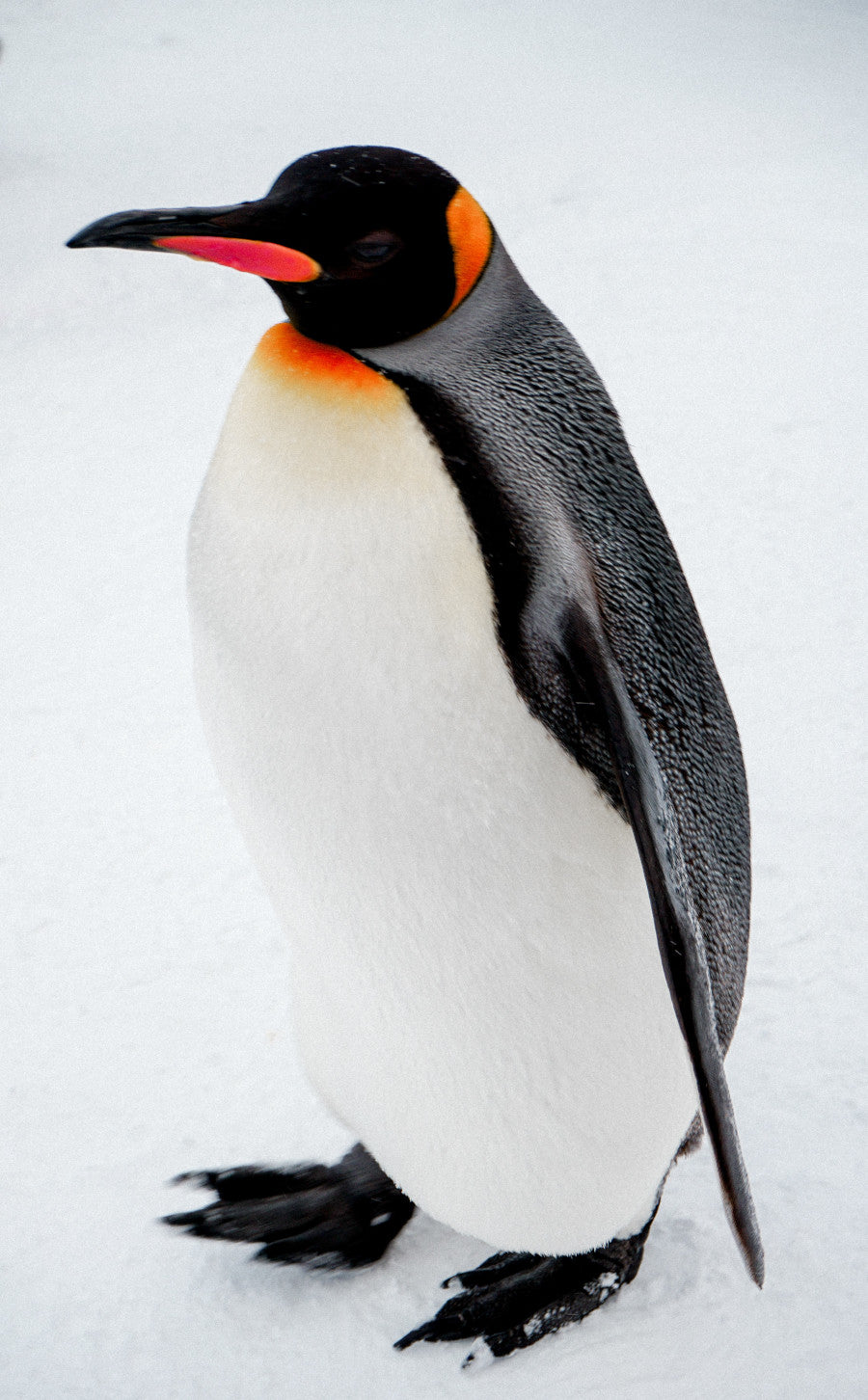
What am I? An emperor penguin. There are 18 species of penguin and I am the tallest and heaviest.
Where do I live? In Antarctica, the most southern part of the world.
Do I fly? No, my wings are small. But I am an excellent fast swimmer and chase fish underwater to catch and eat.
Photo by Kanjanapa Srisuwan on Unsplash

What am I? A dodo, a large flightless bird from the island of Mauritius.
Am I extinct? I'm afraid so. By the end of the 17th century there were no more dodos left in Mauritius or anywhere in the world. Human settlers changed the natural habitat and introduced predators to the island.
Did I have feathers? My feathers were grey, with a white tail.
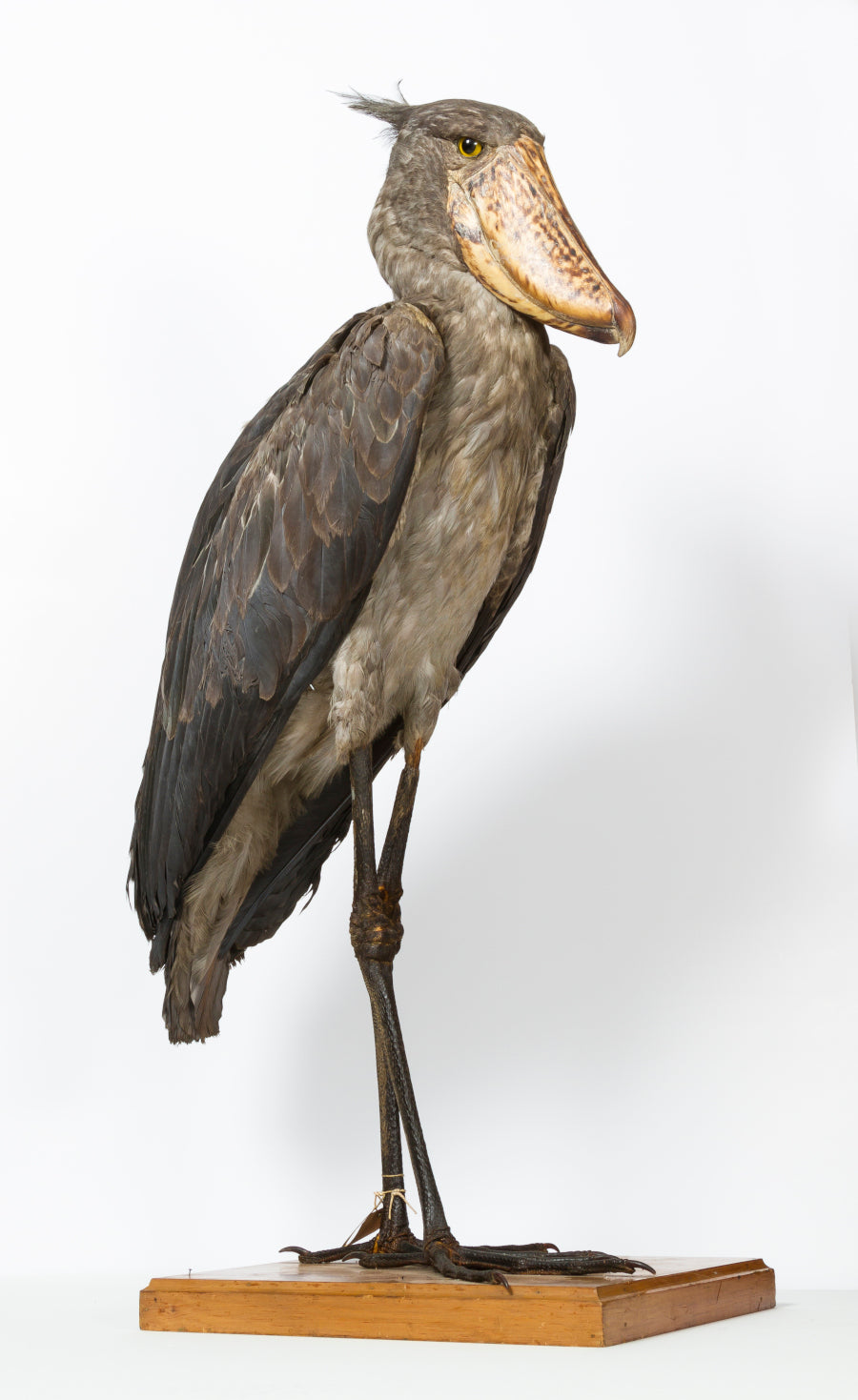
What am I? I am a shoebill bird, a tall bird with a very big beak and I live in western Africa.
What do I eat? Mostly fish. I stand very still in the water and then snatch up the fish with my big beak when they come close to the surface.
Do I fly? I can fly, but quite slowly!
Photograph © University of Cambridge and Chris Green
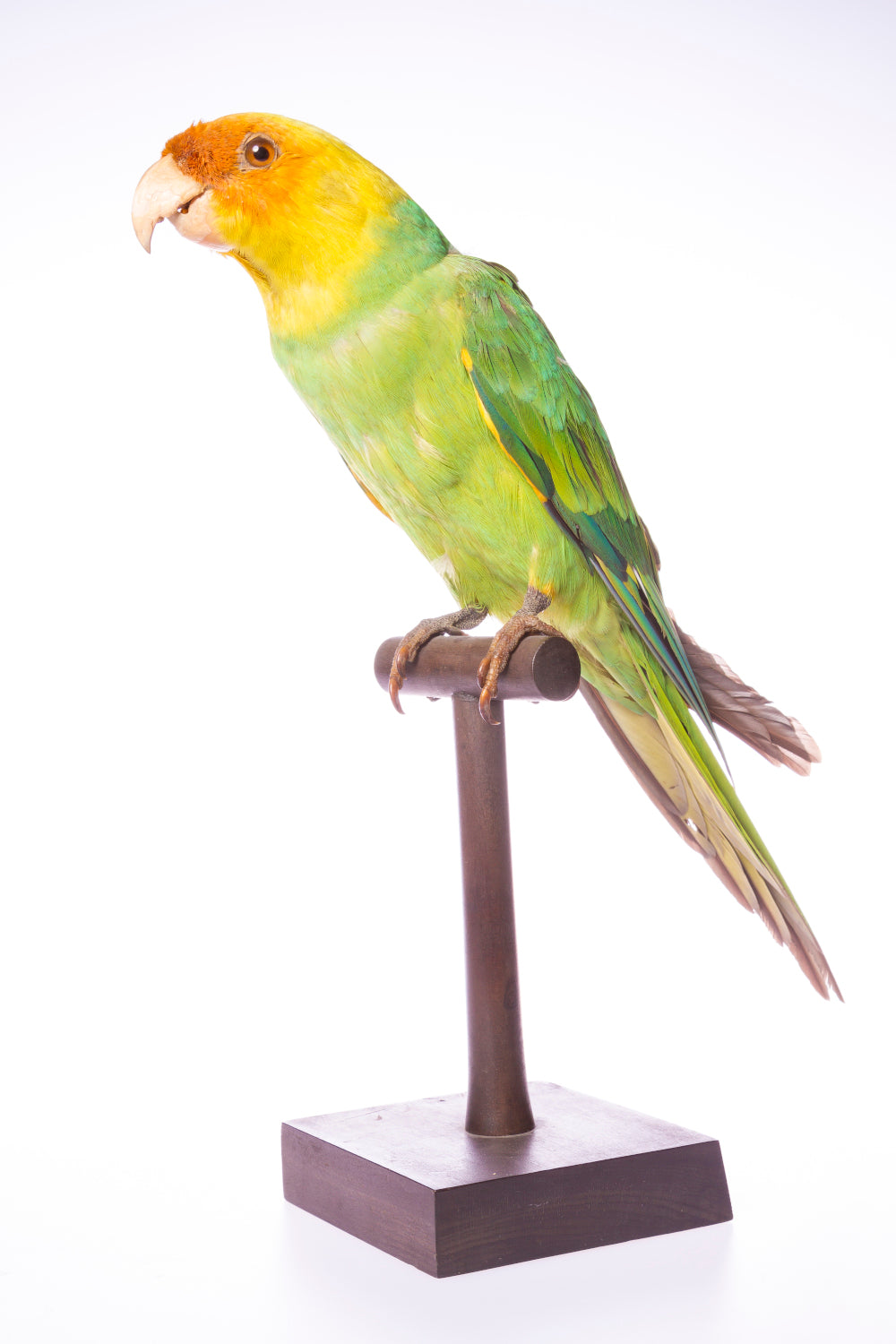
What am I? A Carolina parakeet, a small species of parrot with green, orange, and yellow feathers.
Am I extinct? Sadly yes. The last Carolina parakeet died in 1918. The extinction was caused by a combination of factors including loss of forest habitats, hunting by humans, and illness.
Where did I live? In the United States of America, in forests and swamps.
Photograph © University of Cambridge and Chris Green

What am I? A kiwi, a small round bird with a long beak.
Do I lay eggs? Yes I do. My eggs can be a quarter of my size and are proportionally the largest eggs in the world! I lay them in a burrow and keep them warm until they are ready to hatch. This is called incubation.
How do I move? I walk or run along the ground. My wings are tiny and I cannot fly. A kiwi's beak is good for transmitting smells, and as I walk I tap it along the ground to sniff out food.
Photograph © University of Cambridge and Chris Green

What am I? I am a flamingo, a tall wading bird with a distinctive long neck.
Where do I live? In South America, the Caribbean, and Africa. I like to live where it's warm.
What do I eat? I am an omnivore, which means I eat lots of different things including shrimp, algae, molluscs, and insects. My diet can affect the colour of my feathers, making them pale or bright pink.
Photo by Raoul Creos on Unsplash
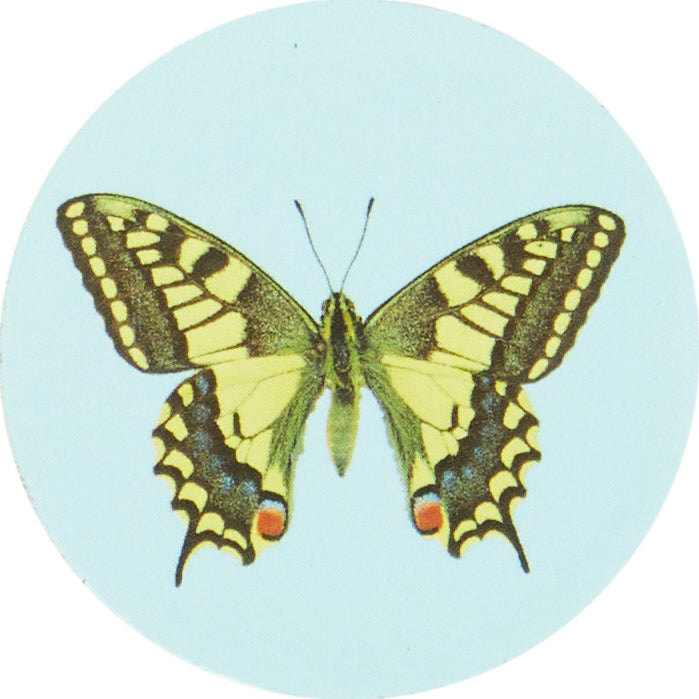
What am I? A swallowtail butterfly, the largest butterfly to be found in the United Kingdom.
Am I extinct? No, but because of habitat changes my numbers are smaller than they used to be. I am now one of the rarest butterflies in the UK. Look out for my yellow and black wings in the Norfolk Broads.
Do I lay eggs? Yes I do. When they hatch a caterpillar comes out, and the caterpillar smells of pineapples!

What am I? A peacock caterpillar. Soon I will form a chrysalis and emerge as a colourful peacock butterfly. I have a black velvety body with black spines.
What do I eat? I like to eat nettles. Although these plants give a painful sting to humans, they don't sting me!
Where do I live? All around Great Britain and Europe. I can usually be found munching my way through a nettle leaf.
Photograph © B. Schoenmakers at waarneming.nl https://commons.wikimedia.org/wiki/File:Aglais_io_(Nymphalidae)_(Peacock)_-_(caterpillar),_Elst_(Gld),_the_Netherlands.jpg

What am I? A common hawker, a large species of dragonfly with a black body and blue and yellow spots.
How do I move? Hawkers are the fastest flyers of all dragonfly species. You might catch sight of us 'hawking' - hovering in the air waiting to spot smaller insects to eat, then quickly swooping to catch them in mid-air.
Where do I live? Throughout Britain, and also in North America, Europe, and Asia.
Photograph © Tom Hisgett https://commons.wikimedia.org/wiki/File:Aeshna_juncea_2.jpg

What am I? The scarlet tiger moth, a distinctive moth with beautiful patterned wings of black, red, white and yellow.
Where do I live? Around wetlands and coastal habitats, mainly in Wales and in the south and west of England. I like damp areas like fens, marshes, and river banks.
What do I eat? I feed on nectar from flowers.
Photograph © Gail Hampshire https://commons.wikimedia.org/wiki/File:Scarlet_Tiger_Moth._Callimorpha_dominula_(48017964866).jpg
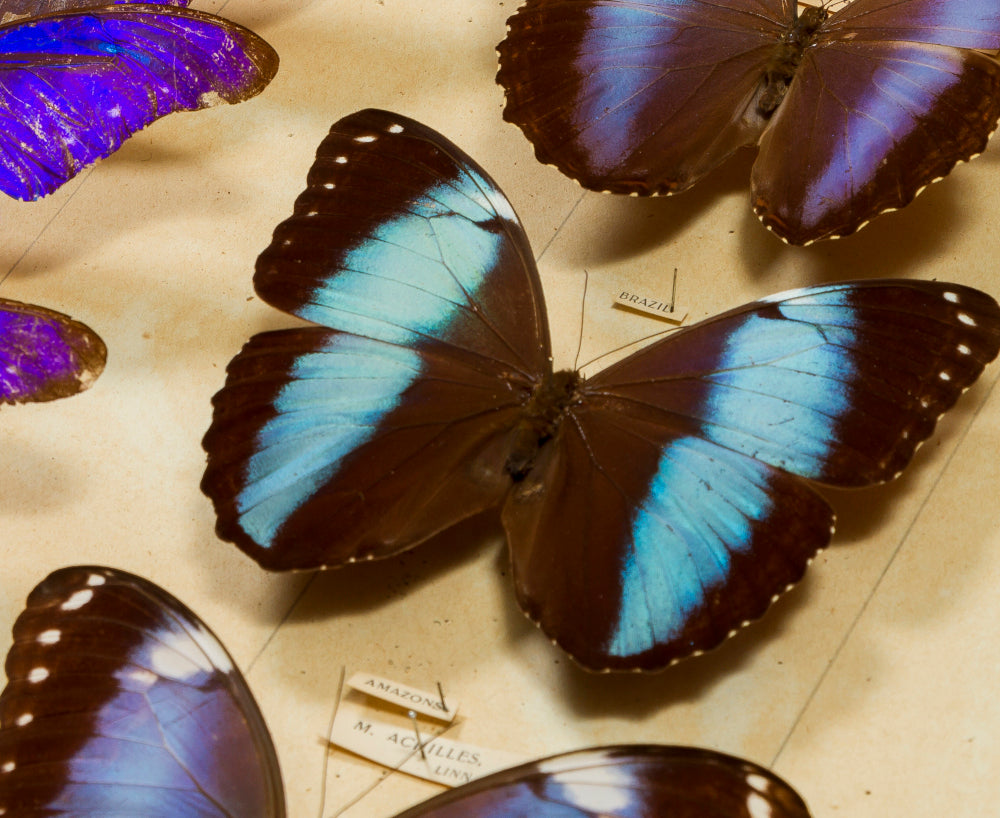
What am I? The blue-banded morpho butterfly, a very beautiful insect with blue and black wings.
Where do I live? All across Central and South America, in countries including Argentina, Brazil, and Peru. I am a neotropical butterfly and like warm environments.
What do I eat? These tropical habitats provide plenty of rotting fruit and tree sap for me to feast on.
Photograph © University of Cambridge and Chris Green
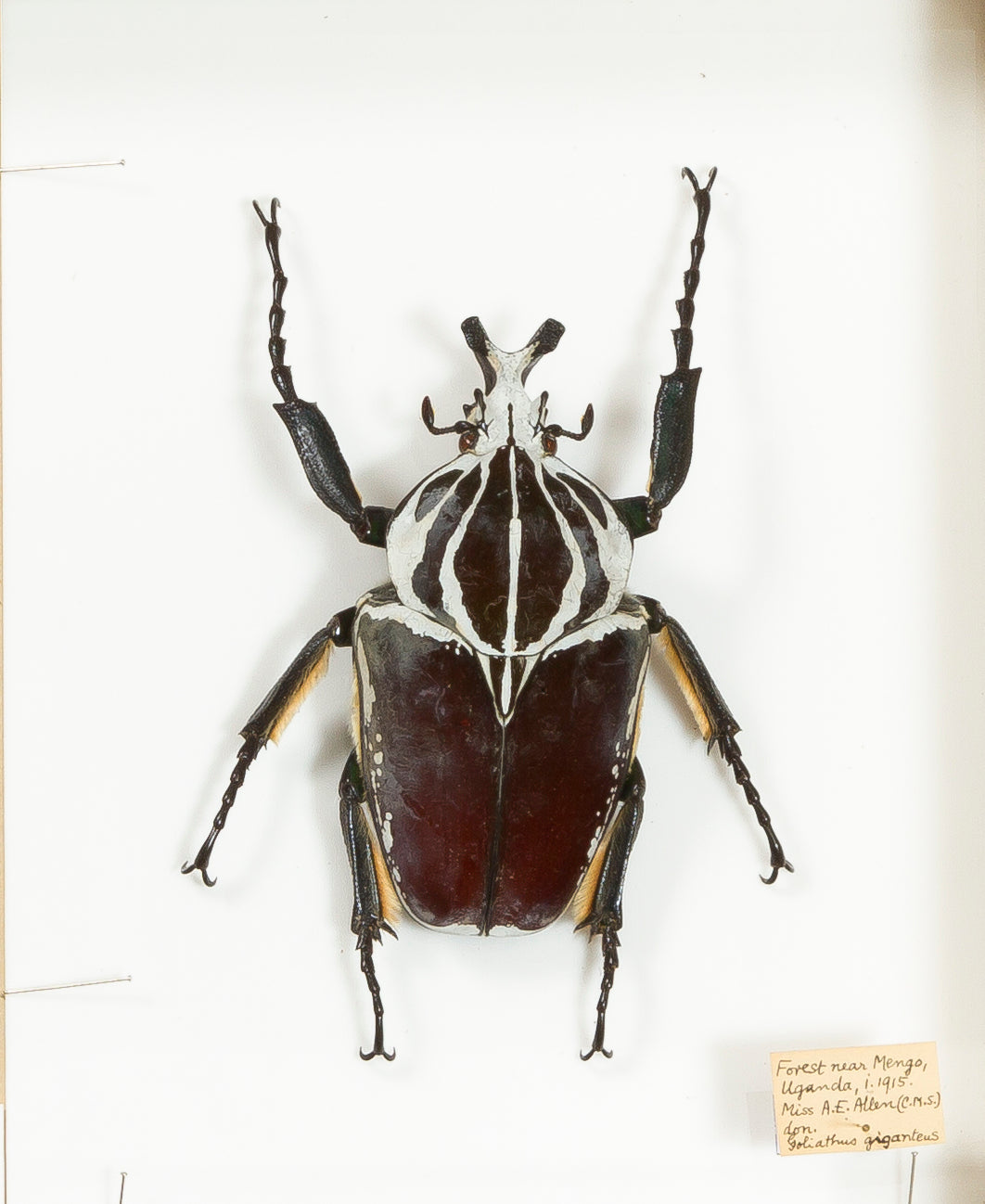
What am I? Goliath beetles are some of the largest and heaviest beetles in the world - that is why we are named after the Biblical giant Goliath!
How do I move? I am very strong indeed, and can lift around 850 times my own body weight. My wings are usually hidden under my carapace, but I can fly when I need to.
Do I lay eggs? Yes, female goliath beetles use their strong heads to burrow into the earth to lay eggs. These hatch into larvae, which over time metamorphosise into adult beetles.
Photograph © University of Cambridge and Chris Green
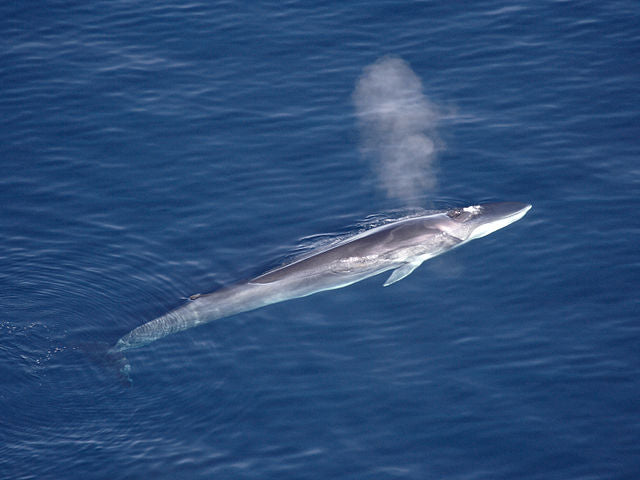
What am I? I am the fin whale, the second largest whale species on Earth (the blue whale is the biggest). I can grow to over 20 metres long!
Where do I live? In all the oceans of the world. I can live in hot tropical waters and cold Polar waters.
What do I eat? I am a filter-feeder, sucking in water and eating small creatures of the ocean including little fish, crabs, and krill.
Photograph © Aqqa Rosing-Asvid https://commons.wikimedia.org/wiki/File:Finhval.jpg
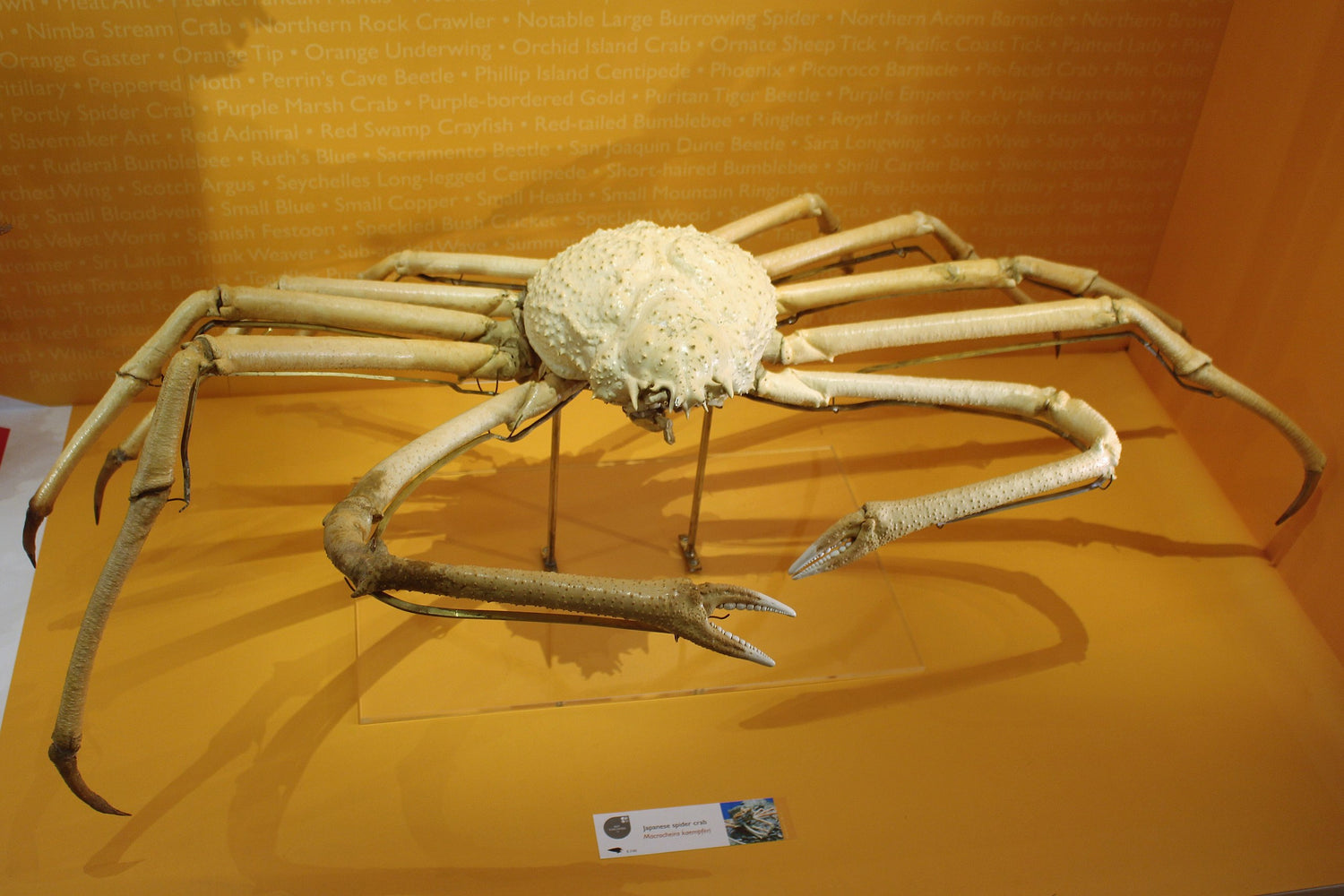
What am I? A Japanese spider crab, a marine arthropod. Arthropods have jointed legs, no backbone, and have external skeletons called exoskeletons.
Do I lay eggs? Yes, the female Japanese spider crab can lay over one million eggs per laying season!
Where do I live? Around the coastal seas of the islands of Japan.
Photograph © University of Cambridge and Chris Green
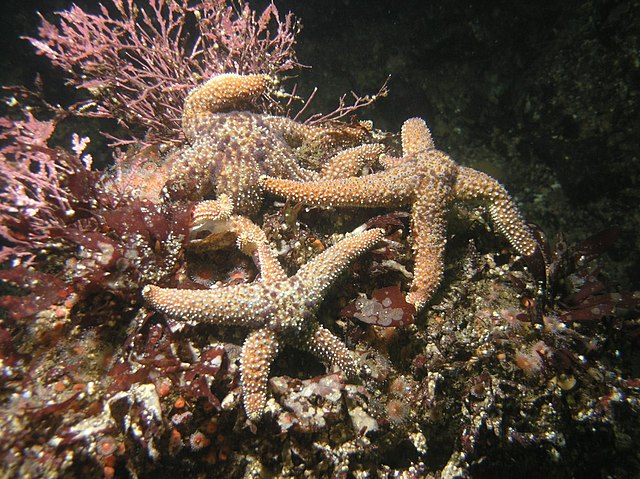
What am I? I am a giant sea star, you can probably guess where I get my name! We are marine invertebrates, meaning we don't have a spinal column.
Where do I live? There are different species of starfish living in all the oceans of the world.
How do I move? Each of my arms has many tiny 'tube feet.' My body takes in water that travels through channels in my arms, and as the water is pushed out again it helps me move along using these tiny feet. This is called a water vascular system.
Photograph © Ed Bierman https://commons.wikimedia.org/wiki/File:Pisaster_giganteus_(2807672966).jpg

What am I? I am a platypus, a mammal that can produce venom and detect its prey using electricity. You may also know me as the duck-billed platypus because of my unusual, bird-like bill.
Where do I live? In the eastern parts of Australia. Platypuses are semi-aquatic, living partly on land and partly in water.
Do I lay eggs? Surprisingly the answer is yes! Along with the echidnas we are the only mammals that do this.
https://commons.wikimedia.org/wiki/File:Wild_Platypus_4.jpg

What am I? An ocelot, a type of spotted wild cat.
How do I move? I am very agile and good at leaping and climbing. I can jump up trees to avoid predators, and spring quickly to catch my prey.
What do I eat? I am a carnivore and eat birds, fish, and small mammals such as mice and rats.
Photograph © University of Cambridge and Chris Green
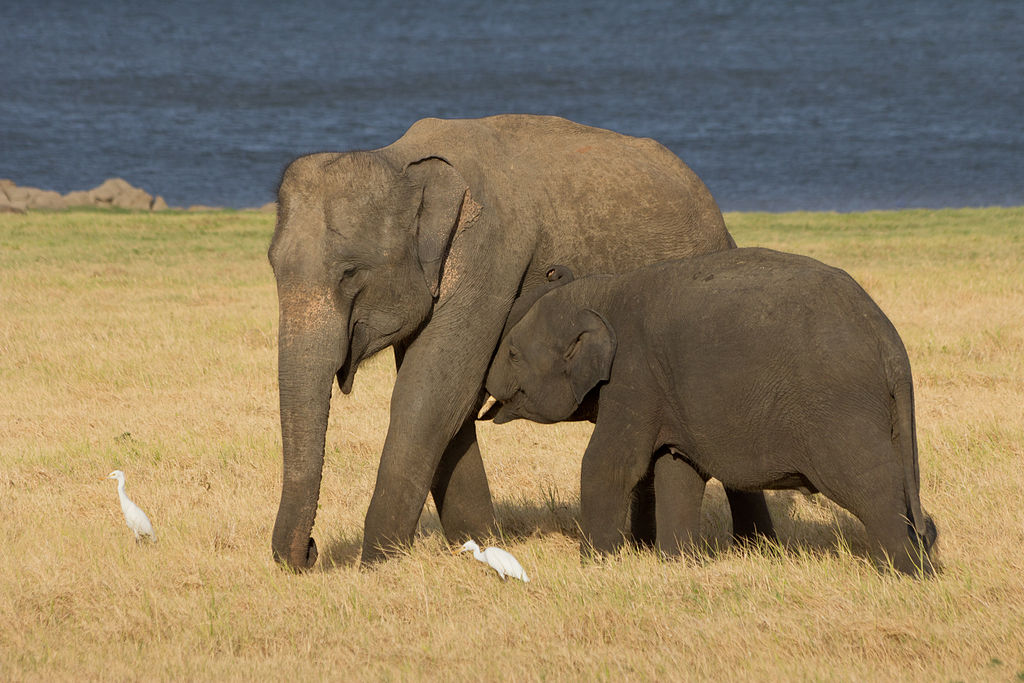
What am I? I am an Asian elephant, one of three species of elephant. The other two are African savanna elephant and African forest elephant. I have the smallest ears of all three species.
What do I eat? Because Asian elephants are so big, we need to eat around 150kg of food each day. We are herbivores and like to eat plants: lots of grass, bark, roots, leaves and stems.
Do I have feathers? No, elephants don't have feathers! I have grey wrinkly skin that can be 2.5cm thick.
Photograph © Carlos Delgado https://commons.wikimedia.org/wiki/File:Elephas_maximus_maximus_-_01.jpg

What am I? The thylacine. You might also know me as the Tasmanian tiger. Like the tiger, I am a fierce predator and have a stripy furry body - but unlike the tiger, I am a marsupial and carry my young around in a pouch like a kangaroo.
Am I extinct? Sadly yes, the last known thylacine died in 1936.
What did I eat? Thylacines were predators, mainly eating small mammals. We were nocturnal, coming out at night to hunt.

What am I? You know me, I'm the ring-tailed lemur! There are around 100 species of lemur, but my striped white and black tail means I am the most recognisable.
Where do I live? Like all lemurs in the wild, I live in the forests of the island of Madagascar. We live in groups called 'troops' with female lemurs ruling the roost.
How do I move? Ring-tailed lemurs like to sleep, travel, and feed in trees, but we are also happy on the ground. We move around on all fours with our distinctive tails held in the air. We are diurnal, which means active during the day.
Photo by Uta Scholl on Unsplash

What am I? I am an aardvark. I have a long snout, big ears, coarse fur and large claws.
What do I eat? My favourite food is termites. I can use my powerful claws to dig through the soil and dismantle termite mounds. Then I use my long sticky tongue to lick up the termites as they come out. My excellent sense of smell means I can track down any termites that stray too far, and lick those up too.
Where do I live? Across central and southern Africa. I am nocturnal and only like to come out at night. During the day I sleep curled up inside a burrow in the ground.
Photograph © Theo Krause https://www.burgerszoo.nl/aardvarken
